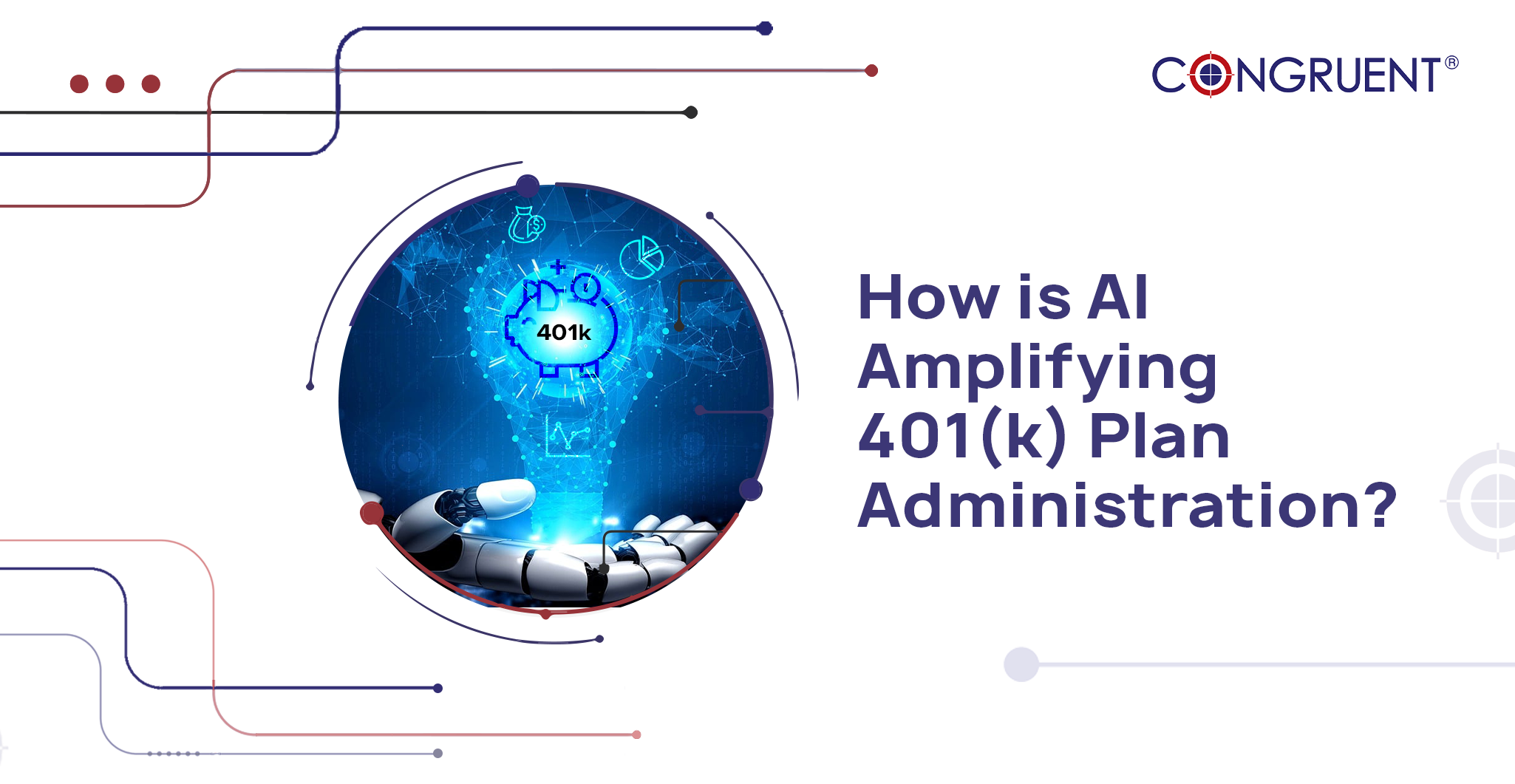
The world of 401(k) plan administration encompasses many tasks and responsibilities, all imperative to the overall well-being of plan participants. As technology continues to evolve and impact various industries, the retirement planning sector is no exception.
Morgan Stanley Wealth Management’s survey reveals that 72% of respondents believe Artificial Intelligence (AI) is a game-changer. AI is quickly becoming an unparalleled force in this field with the potential to revolutionize how plan administrators approach various tasks.
In this article, we will explore how AI is transforming 401(k) plan administration with the latest industry insights, including the evolution of AI in retirement plans and the most recent tools redefining the industry.
The Evolution of AI in Retirement Plans
AI’s foray into retirement planning began with simple automation in data processing, recordkeeping, and customer service response. However, as the technology progressed, AI has significantly matured and has begun to influence various aspects of plan administration:
- Participant Engagement: AI-driven chatbots and virtual assistants have made leaps and bounds in improving customer experience by providing individuals with personalized guidance on retirement planning, addressing concerns, and offering real-time assistance.
- Data Analytics: As participant data volumes grow, AI-powered analytics engines allow plan sponsors and recordkeepers to extract valuable insights. It helps them design better plans, identify at-risk individuals, and facilitate more informed decision-making.
- Fraud Detection and Security: AI algorithms can detect irregularities and unusual patterns in plan transactions. It enables retirement plan administrators to focus on potential fraud cases and take necessary actions before substantial damage occurs.
Latest AI Tools Transforming the Retirement Plan Industry
AI-driven solutions automate complex tasks, optimize decision-making, and transform customer experiences. Here are some of the innovative AI tools currently changing the game in the 401(k) plan administration landscape:
1. Robo-Advisors
One of the most prominent AI tools in the retirement planning industry is the advent of robo-advisors. These digital assistants create and manage individualized investment portfolios based on an investor’s goals, risk tolerance, and time horizon. Robo-advisors can enhance the participant experience by delivering cost-effective and tailored investment advice for 401(k) plan participants.
2. Predictive Analytics
Leveraging the power of AI and machine learning, predictive analytics tools enable plan administrators to forecast participant trends, estimate plan performance, and identify potential challenges. By working with these advanced technologies, administrators can refine their strategies and better assist plan participants in reaching their retirement goals.
3. Natural Language Processing (NLP)
NLP algorithms can infer valuable insights from the unstructured data generated by plan participants’ written correspondence, such as emails and online chat interactions. By analyzing the information, administrators can better understand participant needs, enabling them to improve plan design and client satisfaction.
The Road Ahead
As AI continues to grow and mature, the retirement planning industry must stay informed and adapt to harness the full potential of these technological advances. AI-powered tools help plan sponsors and recordkeepers streamline operations, increase efficiency, and ultimately deliver a superior experience for 401(k) plan participants.
Leveraging various AI and machine learning algorithms provides comprehensive insights into 401(k) plan performance and participant activities. From automated rebalancing to predictive analytics and personalized communications, it also allows retirement plan administrators and recordkeepers to thrive in the ever-changing landscape.
Connect with our experts to learn how our AI-driven tools can help you take your 401(k) plan administration to the next level.
